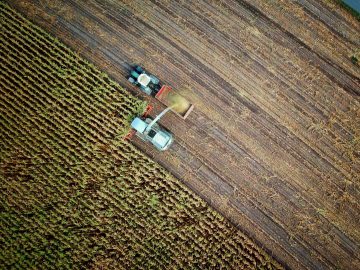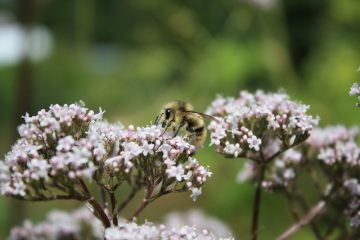Q&A Round-up: Climate Change and COVID-19
A Food System in Crisis: Climate Change, COVID-19, and Opportunities for Change
We received a huge number of thoughtful questions from the audience during our June 25, 2020 webinar on climate change and COVID-19, many of which the presenters didn’t have time to answer live. Below are our panelists’ responses to your questions, with resources for further reading. We look forward to continuing this critical conversation!
A lot of experts are pushing for moves toward an agroecological approach to agriculture in the wake of COVID-19. What impact would this have on outputs as our current agricultural model consists of high inputs and high emissions?
There is a lot of disagreement about the meaning of the term ‘agroecology,’ check out this FAO agroecology website to see what I mean. That being said, I think we can all agree that agroecological principles include things like conserving biodiversity, making efficient use of nutrients and water, and promoting resilience. With that in mind, I don’t think that the adoption of an ‘agroecological approach’ would necessarily reduce yields or increase costs, but we still have a lot to learn. Let me give you one example with which I’m pretty familiar:
A lot of the soil in the Okanagan Valley is coarse-textured and naturally very low in organic matter. After a long period of cultivation, these soils can develop ‘replant disease’, in which newly planted fruit trees or grapevines exhibit poor or patchy growth. ‘Replant disease’ has been attributed, at least in part, to the buildup of populations of parasitic nematodes and pathogenic fungi in the soil. The conventional method for treating soil with ‘replant disease’ has been to fumigate with chemical nematicides, but there are growing restrictions on the use of many of these chemicals. Research conducted by my colleagues at AAFC in Summerland, particularly Tom Forge, have shown that surface mulches of wood chips can sometimes be more effective than chemical fumigation for long-term suppression of parasitic nematodes, promotion of soil biological diversity, build-up of soil organic matter and enhancement of tree growth. In the meantime, researchers at UBC-Okanagan (particularly Mesfin Fentabil and Craig Nichol) have shown that surface mulching with wood chips can also suppress nitrogen losses caused by nitrous oxide (a potent greenhouse gas) emissions. Other colleagues at UBC-O (particularly Nicole Bamber and Nathan Pelletier) have assessed the overall implications of surface mulching with wood chips for greenhouse gas emissions (i.e., taking into account the greenhouse gases generated during mulch production, transport and application), but found that there are major gaps in our understanding of the effects of mulching on fruit yield, nutrient uptake, herbicide use and water consumption. To make informed choices about which types of agro-ecological practices to implement and where comprehensive assessments of their effects and effectiveness are urgently needed. Stay tuned, though, students in my lab are conducting a comprehensive literature review that should help us answer some of these questions.
Check out a story about Tom Forge and his colleagues’ work
Experts say one approach to achieving food self-reliance in southwest BC is by increasing the total farmed area. What are some strategies to do so, especially when the price of land is quite high?

I really don’t have a comprehensive answer but a few thoughts come to mind. First, we expect that the suitable growing regions for some crops are likely to shift with climate change. This could mean that less expensive agricultural land, previously suitable only for grazing or for growing lower-value crops, could be used to produce higher-value crops. Such a trend could help new growers gain access to agricultural land. Of course, this may also require investment in infrastructure to ensure that these areas can be accessed and managed properly. Second, some neat programs have been developed to keep agricultural land in production, while helping young growers enter the agricultural sector. Check out the land matching program for BC here. Finally, we may need to consider some version of ‘sustainable’ or ‘ecological intensification,’ this term is pretty loosely defined but, in this context, I mean making strategic changes to what we grow and how in order to increase food yield per hectare on the already available agricultural land while utilizing practices that do not accelerate negative environmental impacts.
Do you think consistent campaigns to do seasonal water restrictions would be helpful and viable? What about funding initiatives for farmers to support on-farm water conservation practices (i.e. rain gardens, cover crops, drip irrigation, improved water holding capacity, etc.).
Do you think consistent campaigns to do seasonal water restrictions would be helpful and viable?
There are a lot of tools (including seasonal water restrictions) that are being or could be deployed to help us ensure that we have enough water to support agricultural needs, environmental flow needs (i.e., for aquatic habitats) and the needs of the public now and into the future. To find out more, here are a few starting places:
i. The Okanagan Basin Water Board, which recently published a water sustainability strategy for the Okanagan, which specifically discusses seasonal water restrictions.
ii. The Fraser Basin Council’s Healthy Watersheds and Water Resources program
iii. The POLIS Project on Ecological Governance’s Water Sustainability Project
iv. The provincial government’s drought information portal
What about funding initiatives for farmers to support on-farm water conservation practices (rain gardens, cover crops, drip irrigation, improved water holding capacity, etc.).
I am aware of a few resources for farmers. There might be more that I haven’t heard about, but here are a few places to start: The Environmental Farm Plan (EFP) Program provides funding for improving environmental sustainability at the farm level. Eligible projects address habitat protection, air, soil and water quality improvement and emissions reduction. There is a link on the EFP website to the Irrigation System Assessment Guide, which is used to help growers optimize water use.
The Investment Agriculture Foundation (IAF) funds projects aimed at advancing innovation in the BC agricultural sector, including energy and waste management, climate change adaptation and improvements in soil, water and air quality. The Irrigation Association of BC also provide access to useful information about efficient irrigation system design, maintenance and scheduling.When thinking about the prominence of vineyards taking up agriculture land vs. food production, how can we protect agricultural land for food and not wine grape production?

In my experience, agricultural ‘trends’ come and go. Where we used to see large apple trees in the Okanagan growing varieties like MacIntosh and Red Delicious, we now see high-density orchards of Ambrosia and Gala. In the mid-90s, massive tracts of black plastic-covered ginseng fields were popping up all over the Thompson-Nicola region which, only a few decades earlier, had been a major producer of tomatoes. As our winters become warmer, rangeland in the north Okanagan is increasingly being planted to high-value sweet cherries. This is a long-winded way of saying that the agricultural sector can be very adaptable when opportunities arise. In my view, the most important thing (and it is very important) is to ensure that the land and soil remain capable of growing crops. That way, if consumers decide that they want locally-grown food more than they want locally-grown wine, then wine grape vineyards can be planted to something else. – Kirsten Hannam